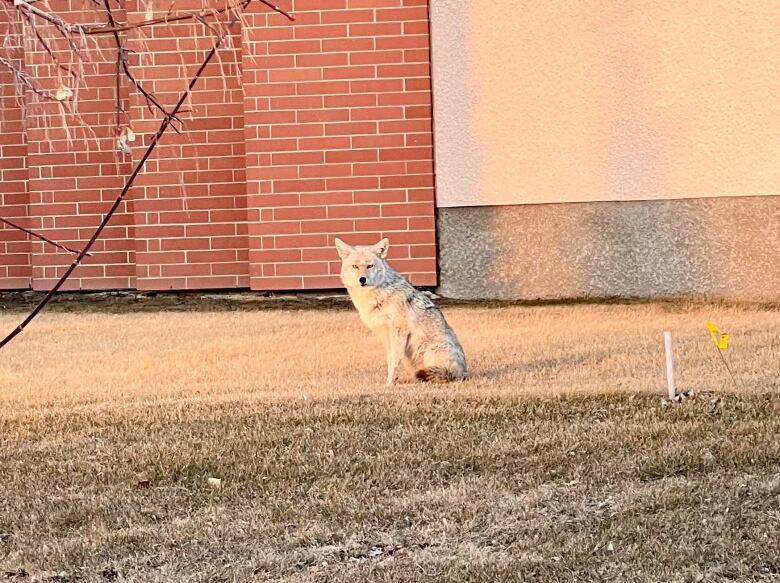What Winnipeggers can do if they encounter a coyote
Coyote sightings have remained stable over the last few years, expert says

Richard Peters was walking his dogs in Winnipeg on Monday night when he came across a coyote.
He noticed it following him and his Jack Russell terriers whilethey were out for a walkin North Kildonan, near the Perimeter Highway.
"At first I thought, is this a dog or a coyote? So I looked around for an owner, because it looked sleek, with great fur, bushy tail," Peters toldCBC ManitobaInformation Radio host Marcy Markusa. "Like a rescue that we can often see."
Peters wasn't worried for himself, but he was scared for his two small dogs.
"It was looking more at my dogs than at me completely unafraid, almost fox-like in its curiosity," Peters said.
"As we continue to look at each other, it sat down and then I snapped a picture of it and eventually it just kind of laid down."

The number of reported coyote sightings has remained stable in recent years, butWinnipeggers may see coyotes more often in spring for a number ofreasons, including because they could be caring for pups, said Janine Wilmot, a human-wildlife coexistence biologist with Manitoba Natural Resources who offered tips for dealing with coyote encounters.
Peters' coyote encounter echoes other reports that get sent to the Natural Resources and Northern Development office, Wilmot said.
Most coyote reports in the city involve the presence of a pet dog, with thecoyotes more interested in the pet than the human, she said.
"They try and avoid encounters with people. They tend to be a very wary animal," Wilmot said.
Typically, they will follow dog walkers as a way to keep an eye on the dogs, which they see aspotential threats to their territory because they are also canines.
Essentially, coyotes perceive dogs as competitors who can steal food and other resources, Wilmot said.
"They're not aware of the fact that our domestic dogs get their food from the grocery store, of course, so they want to protect their food resources in the area."
It is important to keep pets on a leash toreduce the risk of an attack, Wilmot said.
Winnipeggers who walk at night are more likely to have close encounters. Coyotes are afraid of humans, and as a result, have shifted to nocturnal behaviour to avoid people, Wilmot said.
If a coyote approaches you, become "large and loud" to deter it, a practice known as hazing.
Examples of hazing include raising a jacket above your head to appear larger and shouting. Carrying pebbles in a canister or a safety whistle give you another option for creatingnoise.
Wilmot warns against running away, as that can result in the coyote chasing you.
Peters' sighting happened in North Kildonan, but there have been coyote sightings all over the city, with the number of sightings fluctuatingwithin different parts of the city, she said.
The coyote Peters saw did not attack him or his dogs, which wereon a leash.One of his dogs is outgoing and without a leashmay have tried to play with the coyote, Peters said.
Winnipeggers can report coyote sightings to conservation officersby calling 204-945-5221.
with files from Wendy Parker












_(720p).jpg)


 OFFICIAL HD MUSIC VIDEO.jpg)
.jpg)



























































































